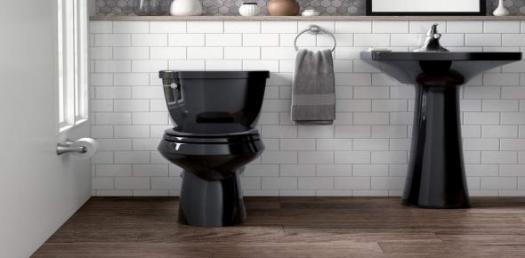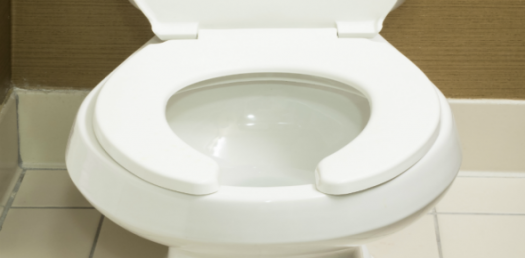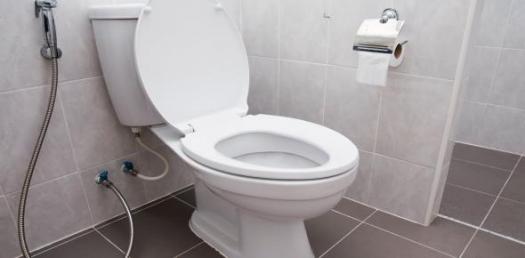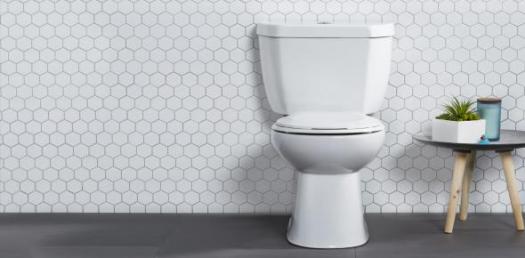How Much Do You Need The Toilet? Quiz
(10).png)
You may never know how much you need the toilet until you feel a serious need to use it. As generally known, the main activity that is normal to do is excretion. Nature has made everything beautiful! Therefore every process involved in this is usually painless and easy for an individual in health. Are you sure you know about the toilet?
- 1.
What is a toilet without water called?
- A.
Water toilet
- B.
Mobile toilet
- C.
Dry toilet
- D.
Local toilet
Correct Answer
C. Dry toiletExplanation
A toilet without water is called a dry toilet because it does not require water for flushing. Dry toilets are designed to separate solid waste from liquid waste and use alternative methods such as composting, incineration, or chemical treatment to manage waste. These toilets are often used in areas with limited water resources or in off-grid locations where traditional water-based sanitation systems are not available.Rate this question:
-
- 2.
What is toilet set-up for sitting posture called?
- A.
Dry toilet
- B.
Squat toilet
- C.
Flush toilet
- D.
Porcelain toilet
Correct Answer
B. Squat toiletExplanation
A squat toilet is a type of toilet set-up that allows for a sitting posture. Unlike a flush toilet or a porcelain toilet, which are designed for a sitting position, a squat toilet requires the user to squat or crouch down in order to use it. This type of toilet is commonly found in many parts of Asia and the Middle East, where it is believed to be a more natural and healthier way of eliminating waste.Rate this question:
-
- 3.
Which of these is not connected to dry toilets?
- A.
Treatment device
- B.
Composting chamber
- C.
Septic tank
- D.
Removable container
Correct Answer
C. Septic tankExplanation
A septic tank is not connected to dry toilets. Dry toilets are designed to separate liquid and solid waste, while septic tanks are used for the treatment of wastewater from toilets that are connected to a sewer system. In dry toilets, waste is typically composted or collected in a removable container for later disposal or treatment. Therefore, a septic tank, which is specifically used for the treatment of wastewater, is not connected to dry toilets.Rate this question:
-
- 4.
Which of these diseases is transmitted through feacal route?
- A.
Typhoid
- B.
Tuberculosis
- C.
Cholera
- D.
Influenza
Correct Answer
C. CholeraExplanation
Cholera is transmitted through the fecal-oral route, meaning that it is spread through contaminated food or water that has been contaminated with fecal matter containing the bacteria Vibrio cholerae. This can occur in areas with poor sanitation and hygiene practices. Ingesting the bacteria can cause severe diarrhea and dehydration, making it important to practice proper hygiene and ensure the safety of food and water sources.Rate this question:
-
- 5.
Which of these features is absent in high tech toilets?
- A.
Automatic-flushing mechanisms
- B.
Blow dryers
- C.
Artificial flush sound
- D.
Pressure system
Correct Answer
D. Pressure systemExplanation
High tech toilets typically have automatic-flushing mechanisms, blow dryers, and artificial flush sounds to enhance user experience and convenience. However, a pressure system is not a common feature found in high tech toilets. This system is typically associated with older or traditional toilets that use a gravity-fed water supply to create flushing pressure. High tech toilets often use advanced technology and water-saving mechanisms, such as dual-flush options or vacuum-assisted flushing, eliminating the need for a pressure system.Rate this question:
-
- 6.
Which of these would allow users play video games?
- A.
Sega
- B.
Interactive urinals
- C.
Bear toilets
- D.
Toylet
Correct Answer
B. Interactive urinalsExplanation
Interactive urinals would allow users to play video games. These urinals are equipped with screens and sensors that detect the user's movements and actions, allowing them to interact with the game. This unique concept combines the functionality of a urinal with entertainment, providing a fun and interactive experience for users while using the restroom.Rate this question:
-
- 7.
Which of these is used in aircraft lavatories?
- A.
Vacuum toilets
- B.
Sewer toilets
- C.
Flush toilets
- D.
Interactive urinals
Correct Answer
A. Vacuum toiletsExplanation
Vacuum toilets are used in aircraft lavatories. These toilets operate by using suction to remove waste from the bowl, rather than relying on water to flush it away. This design is preferred in aircraft lavatories due to its efficiency in water usage and waste disposal, as well as its ability to reduce odor and maintenance requirements.Rate this question:
-
- 8.
Which of these is a personal hygiene act after using the toilet?
- A.
Flushing the toilet
- B.
Washing hands
- C.
Using tissue paper
- D.
Washing the toilet towel
Correct Answer
B. Washing handsExplanation
Washing hands is a personal hygiene act after using the toilet because it helps to remove any bacteria or germs that may have been transferred from the toilet or from touching other surfaces in the bathroom. This practice helps to prevent the spread of diseases and maintain cleanliness and good health. Flushing the toilet is important for sanitation, but it does not directly contribute to personal hygiene. Using tissue paper may be necessary for cleaning oneself, but it does not address the need to clean the hands. Washing the toilet towel is not a personal hygiene act, as it does not pertain to the individual's cleanliness.Rate this question:
-
- 9.
What kind of waste is obtained from the toilet?
- A.
Solid waste
- B.
Sewage
- C.
Toxic waste
- D.
Kitchen waste
Correct Answer
B. SewageExplanation
Sewage is the correct answer because waste from the toilet consists of human excreta, toilet paper, and water, which is collectively known as sewage. Sewage contains both solid and liquid waste, including feces, urine, and other bodily waste. It also includes water used for flushing, which carries away the waste. Sewage is typically transported through a sewage system and treated before being discharged into the environment.Rate this question:
-
- 10.
What is the toilet that requires pay before use called?
- A.
Flush toilet
- B.
Flying toilet
- C.
Floating toilet
- D.
Pay toilet
Correct Answer
D. Pay toiletExplanation
A pay toilet is a type of toilet that requires payment before use. This means that individuals must pay a fee in order to gain access to the toilet facilities. This system is often used in public places or areas where there is a need to control access to the toilets and maintain cleanliness. By requiring payment, it helps to cover the costs of maintenance and cleaning, as well as discouraging misuse or vandalism of the facilities.Rate this question:
-
Quiz Review Timeline +
Our quizzes are rigorously reviewed, monitored and continuously updated by our expert board to maintain accuracy, relevance, and timeliness.
-
Current Version
-
Mar 21, 2023Quiz Edited by
ProProfs Editorial Team -
Dec 15, 2018Quiz Created by
Gregorynaomi












